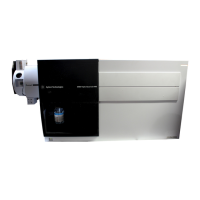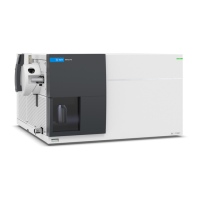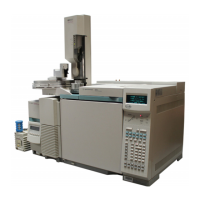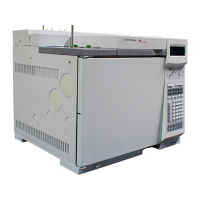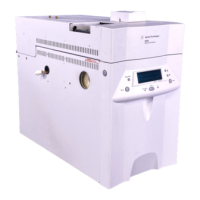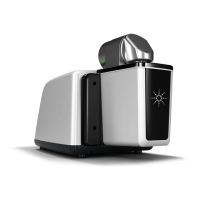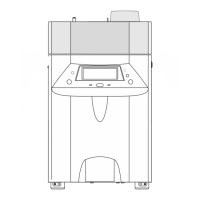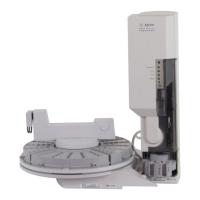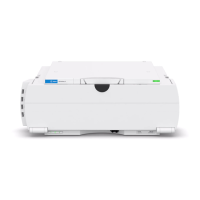42 Agilent 6500 Series Q-TOF LC/MS Maintenance Guide
2Maintenance
To prepare the reference mass solution
The internal reference mass solution allows you to get accurate mass
time-of-flight data. A minimum reference mass signal abundance of several
thousand counts and maximum abundance of several hundred thousand
counts will provide accurate reference mass corrections. If LC mobile phase
modifiers are present (e.g. Na+, K+, acetate, formate), competition may cause
multiple molecular species to attenuate the reference mass response. The
actual concentrations of the mass reference compounds in the solution you
prepare will depend upon several instrument operating parameters:
• LC gradient or isocratic operation
• LC flow rate, mobile phases and modifiers
• MS source settings including fragmentor and octopole RF voltages
The data acquisition mass range should be set wide enough to include all of
the reference masses. For small molecule analysis, this range is typically m/z
50 to 1000 for positive mode and m/z 50 to 1100 for negative mode. Note that
m/z 1034 is the TFA adduct of HP-0921.
Table 7 ES-TOF Reference Masses (shaded cells indicate principal ions)
Species Positive Ion (m/z) Negative Ion (m/z) Formula Wt. Molecular Formula
CF3 (TFA fragment) 68.995758 C F3
TFA anion 112.985587 131.06 C2 O2 F3 (N H4)
Purine 121.050873 119.036320 120.11 C5 H4 N4
HP-0921 922.009798 1033.988109 921.24 C18 H18 O6 N3 P3 F24
HP-0921 (+ formate) 966.000725
HP-0921 (+ acetate) 980.016375
